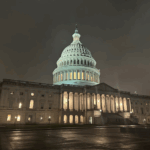
The Senate panel that oversees funding for the Department of Homeland Security is recommending $48.3 billion for the department in fiscal year 2019, an increase above the requested amount and the current budget.The proposal is $900 million more than the Trump administration requested and $611 million above the fiscal year 2018 appropriation, and includes $1.6 billion around 65 miles of border fencing in the Rio Grande Valley area of the southern border, in line with the request.“My highest priority in…

 By
By 










